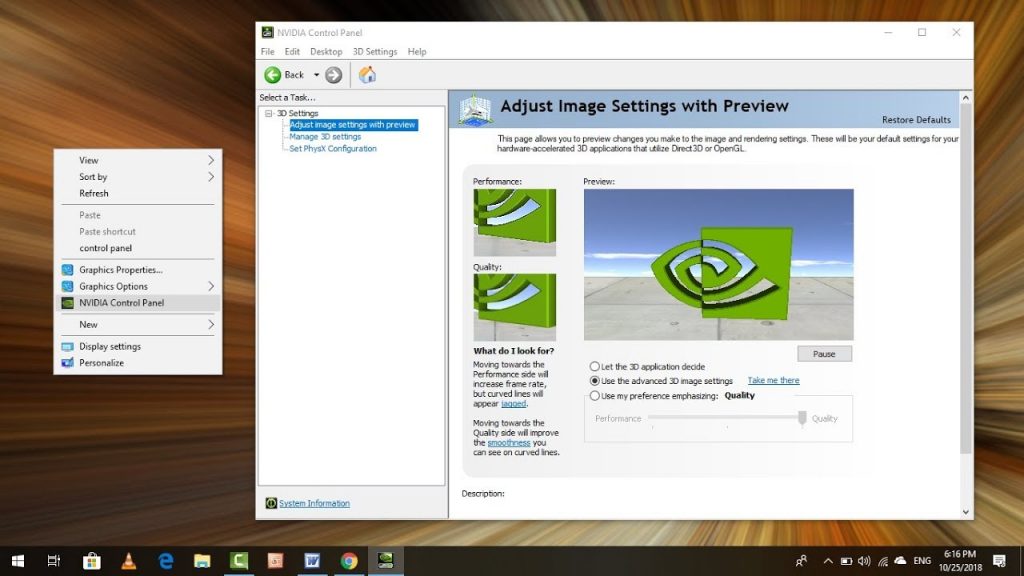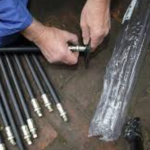The way the monitor works is that it fires off many picture pixels to make a whole image. Then, it waits for the monitor’s refresh rate (usually 60 times per second) before firing another batch of picture pixels out (hence why LCD has to be “refreshed.”) Since each batch of picture pixels is a single image, there will be a delay between the tears. So, instead of seeing one big static screen full of tears, we get to see two smaller images that slowly come together– hence the term “screen tearing.” It is necessary to know How to stop screen tearing?
Why is it bad? Because every time you move your mouse or scroll, it can get “stuck,” so you’ll notice slow down.
How to stop screen tearing?
Well, glad you asked! The easiest way to stop screen tearing is by editing your NVIDIA Control Panel or AMD Catalyst Settings (the two major graphics card makers.) Most of them have a setting called V-Sync. Some people call it vertical sync, but V-Sync has become the more common name.
Here’s a screenshot of the NVIDIA Control Panel showing what I’m talking about:

This setting will look identical on the AMD Catalyst Control Panel (only the wording will be different.) There you’ll see “Wait for vertical refresh” and “Always wait for the vertical refresh.” The basic thing to remember is that your picture quality will get worse and you’re going to get some lag if you have vsync off. But, screen tearing won’t happen anymore! Well, as long as your computer can handle 60 frames per second or higher. For most modern computers that are fairly powerful, this shouldn’t be an issue, though. If you’re not sure how your computer will handle it, playing an online game is a good way to test out what your settings should be.
There are other ways you can stop screen tearing from happening, period, though. For example, many graphics card drivers can enable triple buffering– this will allow the monitor to go ahead and send off all the picture pixels before waiting for a vertical refresh. It’ll also help with lag since it’s loading more things at once instead of in bigger chunks. The downside to triple buffering is that you won’t get as smooth animation and there will be a bit of lag (since you’re doing more at once) and you can’t get rid of all the tears.
On top of those methods, you can also set the refresh rate in the NVIDIA Control Panel to be slightly higher than your monitor’s refresh rate (you can tell by dragging something over your taskbar– when it lags, that’s what causes screen tearing.) You’ll get slightly more lag and potentially smoother animation but nothing horrible.
Things to take into consideration
If you’re using a laptop, you won’t have the option of setting V-Sync as high as 60 frames per second. If you find yourself getting quite a bit of screen tearing when playing games or doing other stuff on your computer, try setting all of those settings I mentioned above and see how it goes. It’ll probably look worse at first since your picture quality will suffer due to the screen tearing, but you’ll still get smoother animation. If your computer can handle it (and most modern laptops should be able to), setting V-Sync to as high as 60 frames per second is probably the best option for getting rid of all the tears!
What is the cause of screen tearing?
Screen tearing usually happens when you have a non-vsync refresh rate combined with an Nvidia or AMD graphics card. Why? Because your computer is sending off 60 frames per second, but the monitor can’t keep up at that speed. So each frame will get sent multiple times (hence why it appears to be a tear.) Like I said above, laptops will not have this option since they don’t have V-Sync support.
The refresh rate for most monitors
To find out what your current refresh rate is on your monitor, you’ll want to hit Ctrl + mouse scroll down (or right-click if you’re using a laptop.) This should bring up your “Mouse Properties” window and under that, there’s a tab called “Settings.” If you click that tab, there will be an option for your refresh rate. Note that if you don’t see anything when you try to drag the bar around, it means your computer is sending off 60 frames per second signal, but your monitor’s refresh rate is set to something else– maybe 28 hertz or 59 hertz or something like that.
How can I get rid of screen tearing?
In most cases, just enabling V-Sync is going to work best (if your graphics card has this feature.) If you’re using a laptop and can’t enable V-Sync because it’s not supported on your laptop for whatever reason, try setting all of those settings I mentioned up above. You’ll probably need to set your refresh rate in the NVIDIA Control Panel and/or set your V-Sync to triple buffering. Your animation quality will suffer, but it’ll still be smoother than screen tearing– plus, you can always tweak around with different settings until you find something that works for you.
If you’re playing an online game, see if there are any options for V-Sync in general (and just leave it enabled from then on.) Most games should have some kind of setting to help eliminate screen tearing, so make sure you check those out!
Conclusion
Screen tearing can be very annoying– especially when you have a decent computer with good hardware. Hopefully, this article helps inform you about screen tearing and how to get rid of it!












